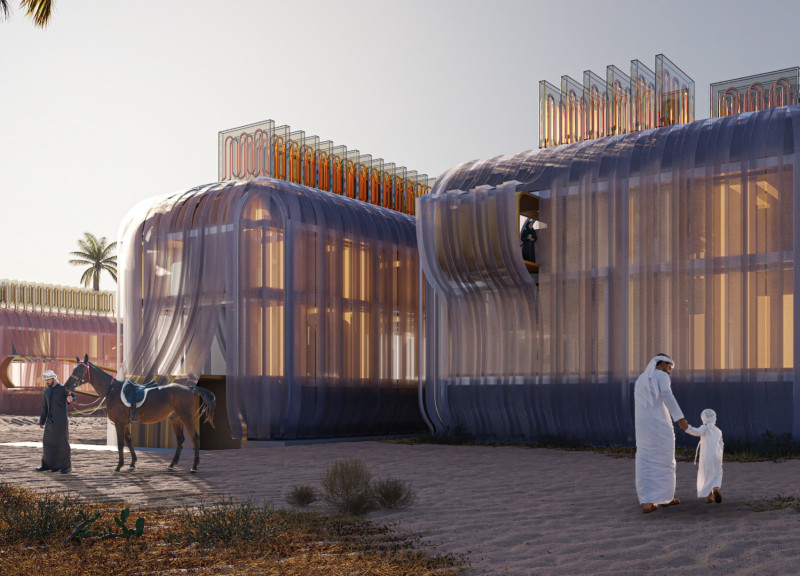5 key facts about this project
This project represents a unique blend of contemporary design principles and sustainable practices. The architecture is characterized by clean lines and an open layout that promotes natural light and visibility, creating an inviting atmosphere for visitors and residents alike. The facade is crafted from a combination of materials including locally sourced brick, weathering steel, and expansive glass panels that allow for transparency and connection with the exterior. These materials were meticulously selected for both their aesthetic qualities and their environmental impact, embodying a commitment to sustainability that resonates throughout the design.
The functionality of the project is carefully considered, with distinct areas designated for various activities. Common spaces are integrated with private areas to encourage interaction while also providing zones for solitude. The layout facilitates a natural flow between spaces, ensuring that movement through the building is intuitive. Additionally, the roof design features green elements, incorporating living plants that not only enhance biodiversity but also contribute to insulation and reduce urban heat effects.
One of the project's unique design approaches is its emphasis on community-centric spaces. Intentional consideration has been given to create areas where people can gather, such as open courtyards and terraces that bridge the indoor and outdoor environments. These spaces are enhanced by thoughtful landscaping that uses native plants, which not only supports local ecology but also reduces water consumption. The architectural design goes beyond mere function, seeking to establish a sense of place and belonging for users.
Another noteworthy aspect is the integration of technology within the building's systems. Smart sensors and energy-efficient lighting are utilized to optimize energy use while enhancing user comfort. These technological enhancements make it possible to monitor and adjust lighting and temperature based on occupancy, leading to a more sustainable operation without compromising the user's experience.
In examining the project's architectural plans and sections, it becomes clear that there is a consistent dialogue between the interior and exterior spaces. This interplay is achieved through large windows and sliding doors that invite the outside in, blurring the boundary between the built environment and nature. The intentionality behind these design choices reflects a broader trend in architecture that prioritizes holistic and responsive design solutions.
In summary, this architectural project stands as a testament to the potential of design to shape environments that are not only functional but also enhance community ties and environmental responsibility. The careful selection of materials, innovative use of space, and attention to sustainable practices come together to create a cohesive and inspiring architectural narrative. For a deeper understanding of the intricate details and ideas behind this project, interested readers are encouraged to explore the architectural plans and sections that accompany this narrative. Through examining these elements, one can gain further insights into the design philosophy and execution that define this remarkable contribution to contemporary architecture.


 Amirali Merati
Amirali Merati 























